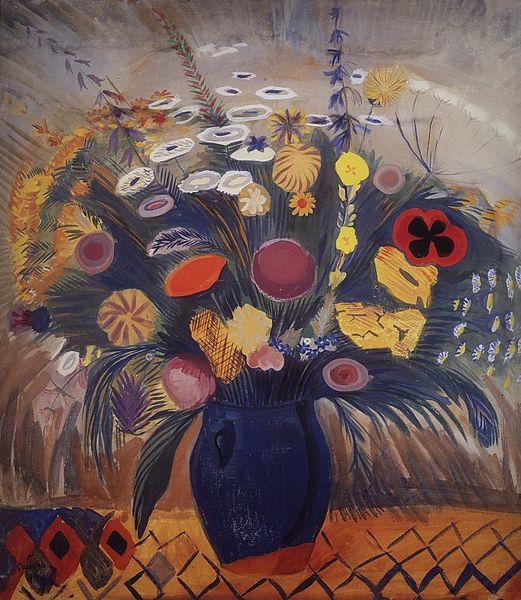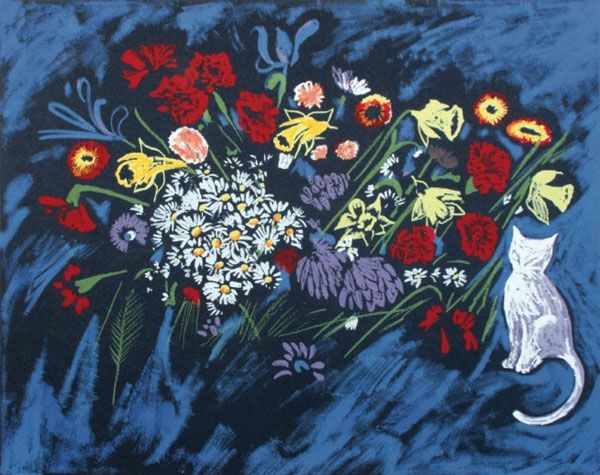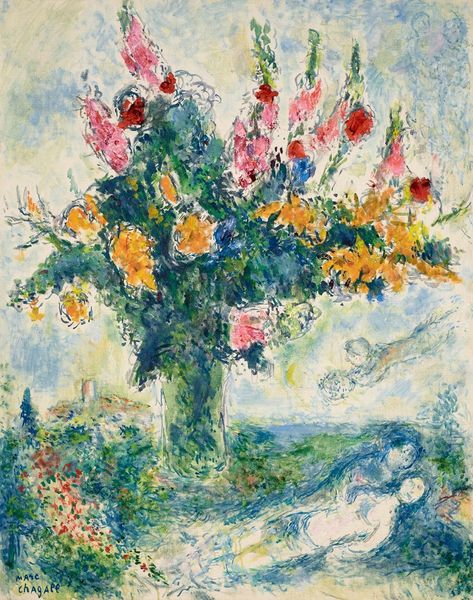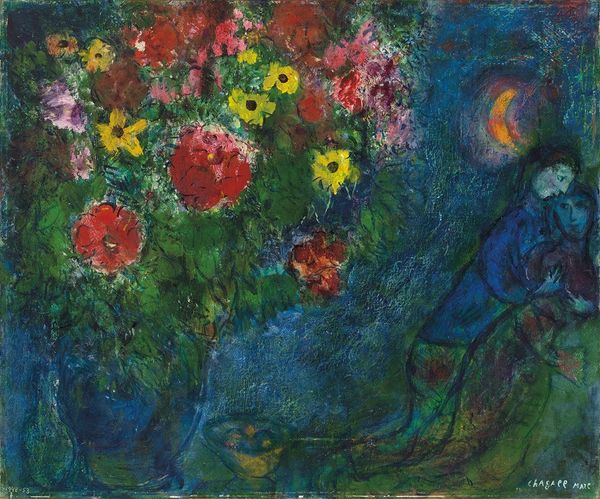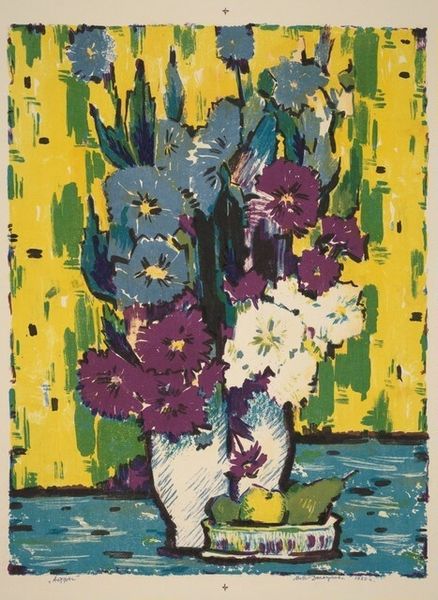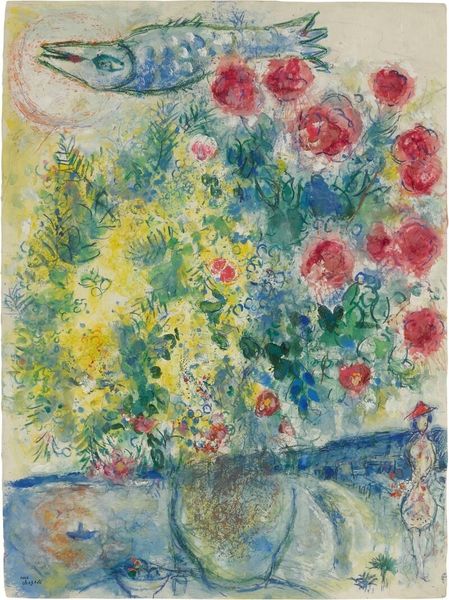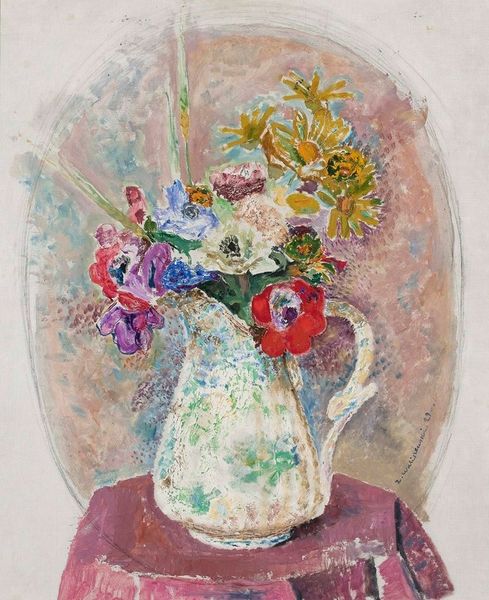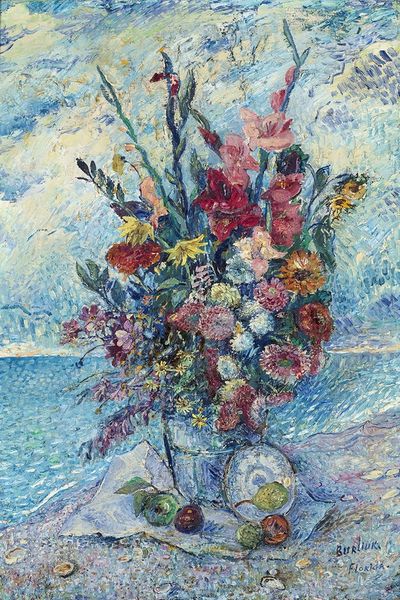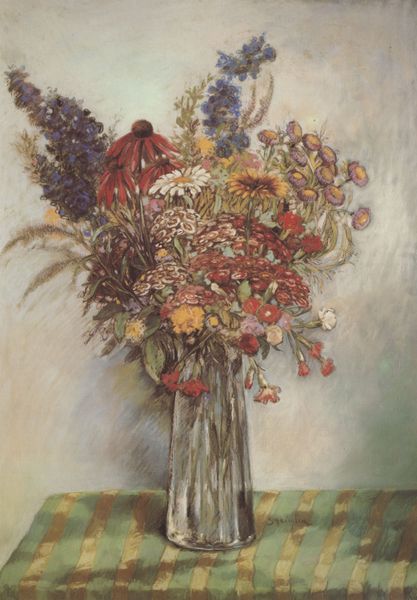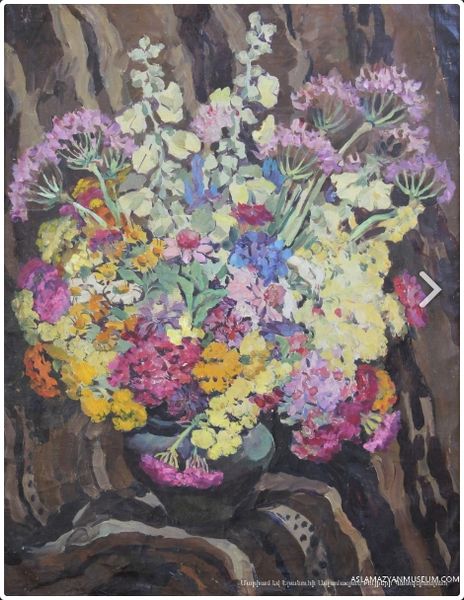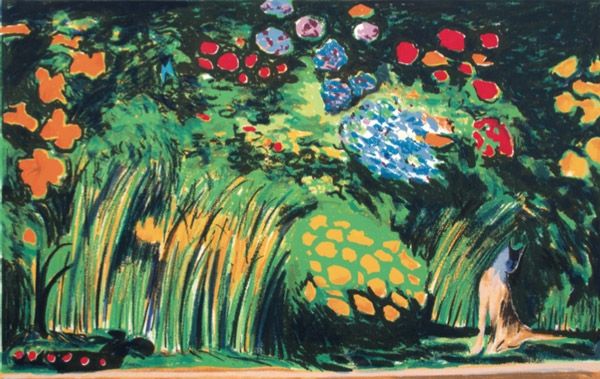
Dimensions: 508 x 356 mm
Copyright: National Gallery of Art: CC0 1.0
Editor: This is Hyman Warsager’s "Flowers," circa 1945, and the materials listed include, interestingly, fresco, collage, impasto, and monoprint. It strikes me as almost an eruption of color and texture contained within the frame. It feels both chaotic and carefully considered. How do you interpret this work through a formal lens? Curator: Consider first the composition: a dense arrangement of floral forms tightly packed into a vase. The artist employs a flattened perspective, minimizing depth and pushing the image towards a surface design. The textures you noted—the fresco-like surface, collaged elements, impasto dabs—these disrupt any illusion of realism, asserting the materiality of the artwork. What do you observe about the color palette? Editor: It is an unusual range—blues, oranges, yellows and browns – and quite subdued; they don’t necessarily harmonize in a conventional sense, yet they create a compelling tension. The strokes appear expressive, not attempting to hide the evidence of the making of the artwork. Curator: Precisely. The disharmonious color relationships, combined with varied textural incidents, underscore the abstract qualities of the piece. Rather than depicting flowers in a naturalistic manner, Warsager is exploring the inherent properties of paint and the possibilities of abstracting from observed forms. Editor: So you’re saying it's less about representing "flowers" and more about exploring color and form through the motif of flowers. What's the purpose of using this diverse set of media and techniques? Curator: A pertinent question. One could argue that these varied techniques serves as a device to flatten depth while enhancing tactile dimensionality. They actively challenge pictorial illusionism and declare the artwork as a constructed object, not a window onto reality. The brushstrokes, texture and printing push this boundary into high-contrast relief and yet pull the object inward at the same time. Editor: I see. By focusing on the formal elements, we move beyond mere representation to understand Warsager’s experiment in abstraction. This close examination helped unpack complexities. Curator: Agreed. Looking at the artwork this way, we have a deeper appreciation for how material and form communicates.
Comments
No comments
Be the first to comment and join the conversation on the ultimate creative platform.
